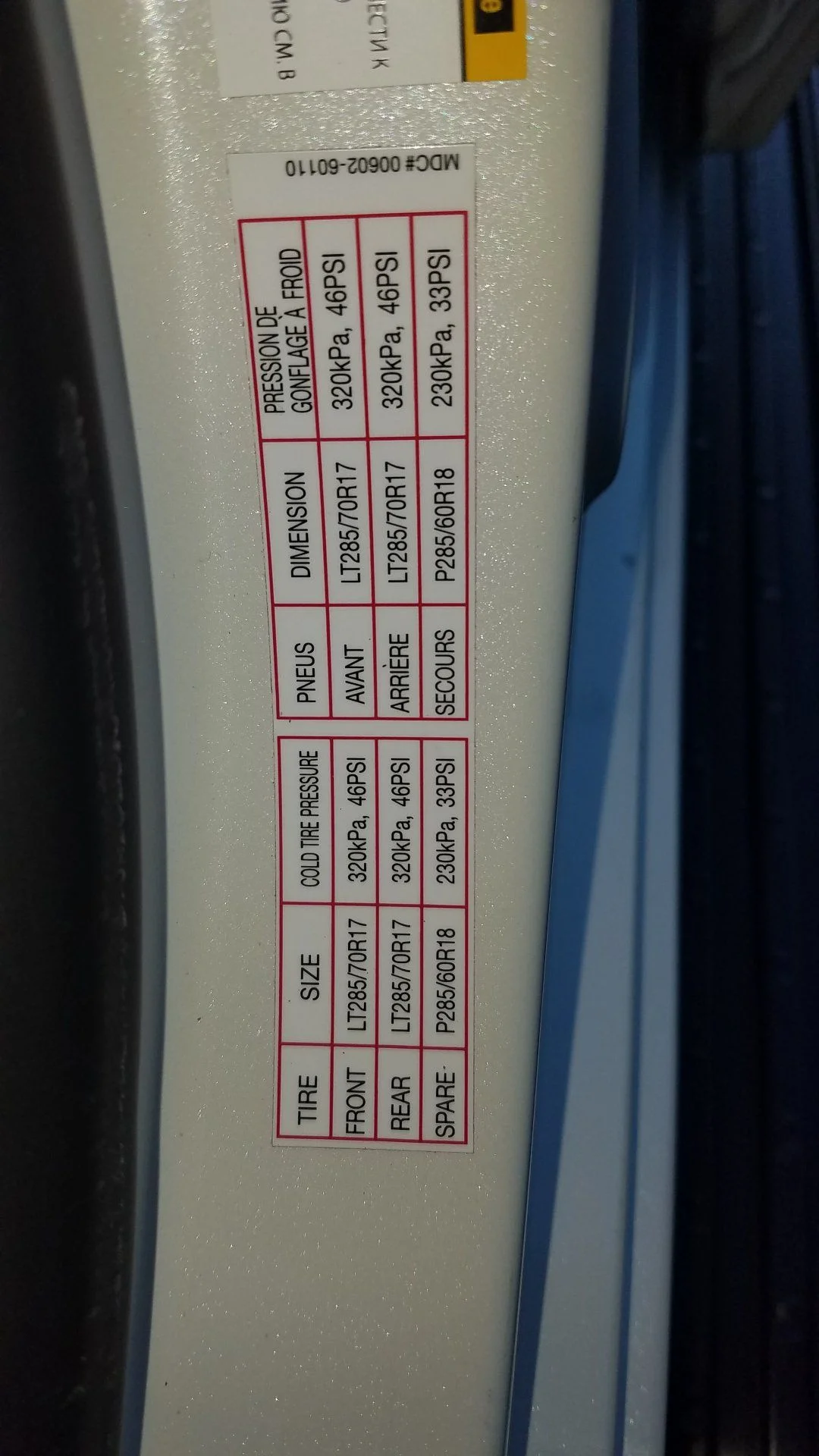"Size-for-size, compared to P-metric tires, LT tires require higher air pressures to carry equivalent loads."
From
this article
Honestly, I'm not sure what the author is trying to say with that statement.
Does it mean that if we had two tires of the same size, one P-Rated and one LT-Rated, that the LT-Rated tire would have to be inflated to a higher pressure to have the same load carrying capacity?
If that's the case, then it appears to be true.
Here's an example of two tires, same size, one P-Rated and one LT-Rated (I chose the LT285/70-17 size for consistency)
P-Rated tire: P285/70-17 @ 35psi = 2,833 pounds Load Limit
LT-Rated tire: LT285/70-17 @ 35psi = 2,105 pounds Load Limit x 1.1 (adjustment for P-Rated application) = 2,315.5 pounds Load Limit.
In this hypothetical case, if we were replacing P-Rated P285/70-17 tires with LT-Rated LT285/70-17 tires, we would have to inflate the LT-Rated tires to approximately 47psi (2,576 pounds x 1.1 = 2,833.6 pounds) to achieve the same load carrying capacity as the P-Rated tires @ 35psi (2,833 pounds).
Again, still not sure what bearing this has on our current discussion.
We are talking about replacing one size of P-Rated tires (P285/60-18) with a different size of LT-Rated tires (LT285/70-17).
In our case it is P285/60-18 tires @ 33psi = 2,512 pounds of load carrying capacity and LT285/70-17 tires @ 39.3psi = 2,286 pounds (adjusted for a P-Rated application 2,286 x 1.1 = 2,514.6 pounds of load carrying capacity)
Even in our case, with different sized tires, your quoted statement is still true - for the same application the LT-Rated tire requires a higher pressure - but it is coincidental because of the different sizes involved.
Did you have a particular point with that quote that I'm missing?

